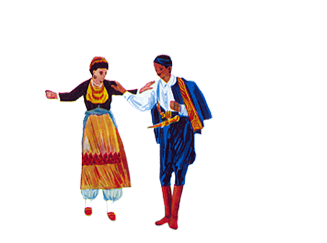

The Candiotikos or Candia dance, 1820 (Gennadius Library, American School of Classical Studies at Athens, Athens)
The Bear's Dance - a local Carnival performance and dance from the village of Gergeri, Heraklion (Municipality of Heraklion)
Clay statue of a men's circular dance in honour of the dead or the chthonic goddess, 1900 - 1300 (Heraklion Archaeological Museum)
Clay statue of a women's ritual dance, 1350 - 1100 (Heraklion Archaeological Museum)
The Lazotikos or Lazotis, 2000 (G. Kouyioumoutzis Folk Dance Workshop)








